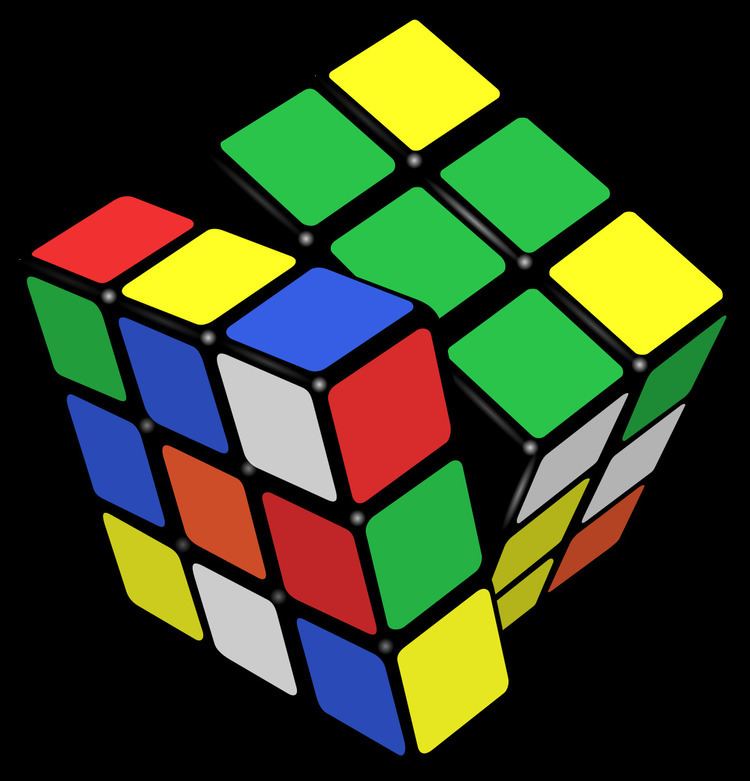 | ||
The Rubik’s Cube group is a group
Contents
Cube moves
A
A cube move rotates one of the
Cube moves are described with the Singmaster notation:
The empty move is
Group structure
The following uses the notation described in How to solve the Rubik's Cube. The orientation of the six centre facets is fixed.
We can identify each of the six face rotations as elements in the symmetric group on the set of non-center facets. More concretely, we can label the non-center facets by the numbers 1 through 48, and then identify the six face rotations as elements of the symmetric group S48 according to how each move permutes the various facets. The Rubik's Cube group, G, is then defined to be the subgroup of S48 generated by the 6 face rotations,
The cardinality of G is given by
The largest order of an element in G is 1260. For example, one such element of order 1260 is
G is non-abelian since, for example,
Subgroups
We consider two subgroups of G: First the subgroup Co of cube orientations, the moves that leave the position of every block fixed, but can change the orientations of blocks. This group is a normal subgroup of G. It can be represented as the normal closure of some moves that flip a few edges or twist a few corners. For example, it is the normal closure of the following two moves:
Second, we take the subgroup
Since Co is a normal subgroup, the intersection of Co and Cp is the identity, and their product is the whole cube group, it follows that the cube group G is the semi-direct product of these two groups. That is
Next we can take a closer look at these two groups. The structure of Co is
since the group of rotations of each corner (resp. edge) cube is
Cube permutations, Cp, is a little more complicated. It has the following two normal subgroups, the group of even permutations on the corners A8 and the group of even permutations on the edges A12. Complementary to these two groups we can take a permutation that swaps two corners and swaps two edges. We obtain that
Putting all the pieces together we get that the cube group is isomorphic to
This group can also be described as the subdirect product
Generalizations
When the centre facet symmetries are taken into account, the symmetry group is a subgroup of
(This unimportance of centre facet rotations is an implicit example of a quotient group at work, shielding the reader from the full automorphism group of the object in question.)
The symmetry group of the Rubik's Cube obtained by dismembering it and reassembling is slightly larger: namely it is the direct product
The first factor is accounted for solely by rotations of the centre pieces, the second solely by symmetries of the corners, and the third solely by symmetries of the edges. The latter two factors are examples of wreath products.
The simple groups that occur as quotients in the composition series of the standard cube group (i.e. ignoring centre piece rotations) are
